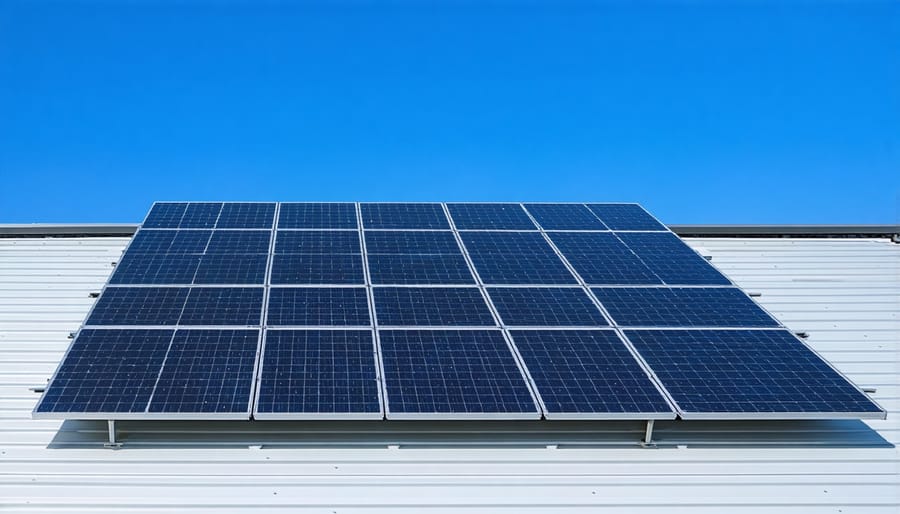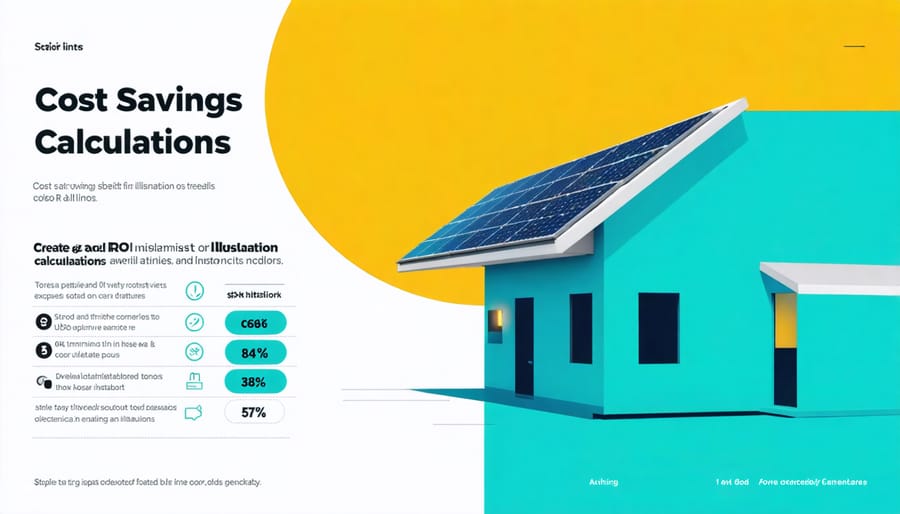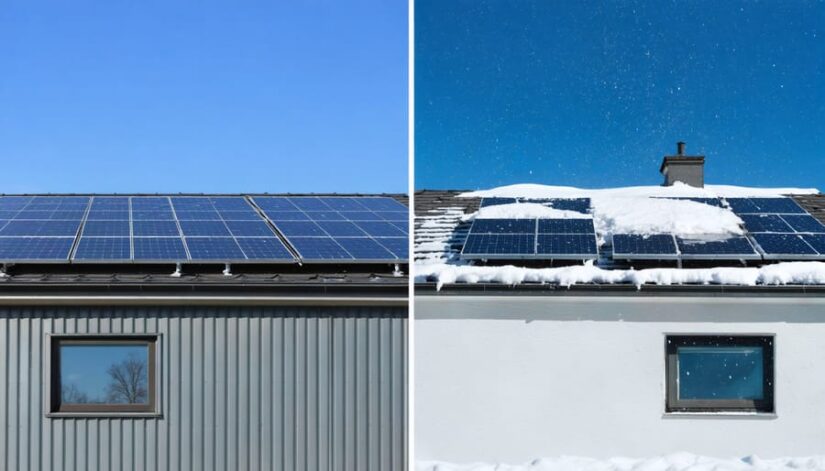Solar Panel Power: Real Benefits and Limitations for Illinois Property Owners
Photovoltaic systems represent a pivotal shift in how Illinois homeowners and businesses harness energy, standing at the forefront of modern renewable energy innovations. As solar technology advances and installation costs continue to decrease, property owners face an increasingly compelling proposition: the potential to generate their own clean electricity while potentially reducing long-term energy expenses. However, the decision to invest in photovoltaic systems requires careful consideration of both their significant advantages and practical limitations. From initial investment costs and energy independence to maintenance requirements and weather dependencies, understanding these factors becomes crucial for making an informed decision about solar adoption. This comprehensive analysis explores the real-world implications of photovoltaic technology, specifically tailored to Illinois’s unique climate conditions and energy landscape, helping you evaluate whether solar power aligns with your property’s energy needs and financial goals.
Key Advantages of Modern Photovoltaic Systems

Financial Benefits and ROI
Installing photovoltaic systems in Illinois offers substantial financial returns through multiple channels. The average Illinois homeowner can expect to save between $800 and $1,200 annually on electricity bills, with savings potentially reaching $30,000 or more over the system’s lifetime.
Illinois residents can take advantage of several financial incentives. The federal Solar Investment Tax Credit (ITC) allows you to deduct 30% of your solar installation costs from your federal taxes. Additionally, Illinois offers the Adjustable Block Program (ABP), which provides Solar Renewable Energy Credits (SRECs) that can be sold for additional income.
Property values typically increase by 4-6% with solar installation in Illinois, translating to an average boost of $15,000 to $20,000 for a median-priced home. Many Illinois municipalities also offer property tax exemptions for solar improvements, ensuring your property taxes won’t increase despite the added value.
The return on investment (ROI) period in Illinois averages 5-7 years, depending on factors like system size, energy consumption, and local electricity rates. With most solar panels guaranteed for 25-30 years, this creates a significant period of pure savings after the payback period.
For businesses, additional incentives like accelerated depreciation and USDA REAP grants can further improve financial returns, making commercial solar installations particularly attractive in Illinois’s energy market.

Environmental Impact and Sustainability
Photovoltaic systems stand at the forefront of sustainable energy solutions, offering significant environmental benefits that extend far beyond individual property boundaries. In Illinois, a typical residential solar installation can prevent approximately 6-8 metric tons of carbon dioxide emissions annually – equivalent to taking two cars off the road or planting 100 trees.
The environmental impact of solar panels becomes even more significant when considering their entire lifecycle. Modern photovoltaic systems typically offset their manufacturing carbon footprint within 2-3 years of operation, providing decades of clean energy thereafter. For Illinois property owners, this means contributing to cleaner air quality and reduced dependence on fossil fuels while supporting local sustainability goals.
Solar panels also help conserve water resources, as they require minimal water for maintenance compared to traditional power generation methods. This is particularly relevant for Illinois communities facing increasing water management challenges. Additionally, most solar panel components are recyclable, with manufacturers implementing take-back programs to ensure responsible end-of-life disposal.
The sustainability benefits extend to land use as well. Rooftop solar installations make efficient use of existing structures without requiring additional land development, preserving Illinois’s valuable agricultural and natural spaces while generating clean power for homes and businesses.
Advanced Material Performance
Recent advancements in photovoltaic technology have dramatically improved both efficiency and durability, making solar panels a more attractive investment than ever before. Modern solar cells now regularly achieve conversion rates above 20%, with some premium models reaching up to 23% efficiency. This represents a significant improvement from the 12-15% efficiency rates common just a decade ago.
These improvements stem from innovative materials like perovskites and multi-junction cells, which are part of the broader spectrum of emerging clean technologies. Illinois homeowners can now access panels with enhanced low-light performance, perfect for cloudy Midwest days, and improved temperature coefficients that maintain efficiency even during hot summers.
Durability has also seen remarkable progress. Today’s panels feature stronger tempered glass, better sealed junction boxes, and improved frame construction that can withstand Illinois’s challenging weather conditions. Most premium panels now come with 25-30 year warranties, protecting against both equipment failure and performance degradation. Advanced anti-reflective coatings reduce light loss while self-cleaning surfaces minimize maintenance needs.
These material improvements translate to better long-term value, with many systems maintaining over 85% of their original output even after 25 years of operation. For Illinois property owners, this means more reliable energy production and better return on investment throughout the system’s lifetime.
Understanding the Limitations
Initial Investment Considerations
The initial investment for a photovoltaic system in Illinois typically ranges from $15,000 to $25,000 for residential installations, depending on system size and complexity. While this upfront cost may seem substantial, Illinois residents benefit from several financing options that make solar more accessible.
Many Illinois homeowners opt for solar loans, which allow for immediate installation while spreading payments over 5-20 years. These loans often come with competitive interest rates and can be structured to ensure monthly payments are lower than current electricity bills. Local banks and credit unions frequently offer specialized solar financing programs tailored to Illinois residents.
The Illinois Solar for All program provides significant financial assistance for low-income households, offering installations with no upfront costs for eligible participants. Additionally, the federal Solar Investment Tax Credit (ITC) allows property owners to deduct 30% of their solar installation costs from their federal taxes.
Commercial property owners can take advantage of accelerated depreciation through the Modified Accelerated Cost Recovery System (MACRS), significantly reducing the effective cost of their solar investment. Many Illinois municipalities also offer Property Assessed Clean Energy (PACE) financing, allowing business owners to fund solar installations through property tax assessments.
Before installation, it’s important to consider your property’s solar potential, current energy consumption, and long-term financial goals to determine the most suitable financing option for your situation.
Weather and Climate Factors
Illinois experiences distinct seasonal variations that significantly impact photovoltaic system performance throughout the year. During summer months, longer daylight hours and increased solar radiation create optimal conditions for energy production, with peak efficiency typically occurring between May and August. However, winter months present unique challenges, with shorter days and increased cloud cover reducing overall system output by approximately 30-40% compared to summer performance.
Snow accumulation on solar panels can temporarily decrease efficiency, though the panels’ tilted installation and dark surface often help with natural snow shedding. Interestingly, colder temperatures actually improve panel efficiency, as photovoltaic cells operate more effectively in cool conditions. This partially offsets the reduced daylight hours during winter months.
Spring and fall seasons offer moderate production levels, with changing weather patterns affecting daily output. Illinois’ humid continental climate means systems must withstand temperature extremes ranging from below zero to over 90°F, as well as severe weather events like hail and thunderstorms. Modern photovoltaic systems are designed to handle these conditions, with most installations rated to withstand one-inch hailstones and winds up to 140 mph.
The state’s average of 198 sunny days per year provides ample opportunity for solar energy generation, though proper system sizing should account for seasonal variations to ensure year-round energy needs are met.

Installation and Maintenance Requirements
Installing photovoltaic systems requires careful planning and professional expertise. While the initial setup involves thorough site assessment, proper mounting, and electrical integration, most installations can be completed within 2-3 days for residential properties. The process typically includes roof inspection, panel placement optimization, inverter installation, and connection to your home’s electrical system.
In Illinois, solar panels are remarkably low-maintenance due to their durable construction and lack of moving parts. However, there are some basic upkeep requirements to ensure optimal performance. Regular cleaning is necessary, especially during pollen season and after storms, though natural rainfall often helps keep panels relatively clean. Professional inspection is recommended annually to check electrical connections, mounting hardware, and overall system performance.
Winter maintenance in Illinois requires special attention to snow removal, though most panels are installed at an angle that allows snow to slide off naturally. It’s important to keep nearby trees trimmed to prevent shading and debris accumulation. The inverter should be monitored regularly for proper functioning, and performance metrics should be tracked through the system’s monitoring app or interface.
Most manufacturers provide warranties ranging from 20-25 years, though systems typically last longer with proper maintenance. Professional maintenance services are readily available throughout Illinois, with many companies offering comprehensive service packages that include regular inspections, cleaning, and performance monitoring.
Making an Informed Decision
When considering a photovoltaic system for your Illinois property, several key factors deserve careful evaluation. Start by assessing your property’s solar potential through a professional site survey. This includes analyzing roof orientation, shade patterns throughout the day, and structural integrity. Local weather patterns and seasonal sunlight variations in Illinois should also factor into your decision-making process.
Calculate your current energy consumption patterns and costs to determine appropriate system sizing. Review your utility bills from the past 12-24 months to understand your average usage and peak demand periods. This data helps determine the potential return on investment and system capacity requirements.
Consider your long-term plans for the property. Since photovoltaic systems typically have a 25-30 year lifespan, they represent a significant long-term investment. If you’re planning to sell your property within a few years, research local real estate market trends regarding solar installations’ impact on property values.
Financial considerations should extend beyond initial installation costs. Evaluate available federal tax incentives, state rebates, and local utility company programs. Illinois offers specific solar incentives through the Adjustable Block Program and net metering policies. Calculate your expected payback period considering these incentives and projected energy savings.
As alternative energy advancements continue to evolve, research current technology options and their track records. Compare different panel types, inverter systems, and battery storage solutions. Consider working with multiple solar installers to compare quotes, warranties, and service agreements.
Remember to review local zoning laws, homeowners’ association regulations, and permit requirements. Some municipalities have specific guidelines for solar installations, and obtaining necessary approvals early can prevent delays. Additionally, check your homeowner’s insurance policy to understand coverage requirements for solar installations.
By thoroughly evaluating these factors, you can make an informed decision about whether photovoltaic systems align with your property’s needs and financial goals.
Photovoltaic systems offer significant advantages in terms of energy independence, environmental benefits, and long-term cost savings, despite initial investment costs and installation considerations. For Illinois property owners considering solar energy, the key is to weigh these factors against your specific needs and circumstances. Start by getting a professional energy audit of your property, researching local solar incentives, and consulting with certified solar installers who understand Illinois’ unique climate and regulations. Remember that solar technology continues to advance, making systems more efficient and affordable each year. Whether you’re a homeowner or business owner, taking the time to thoroughly evaluate your options and work with experienced local professionals will help ensure a successful transition to solar energy that meets your energy goals and budget requirements.


